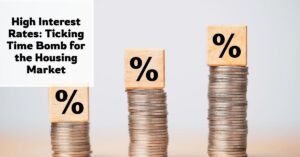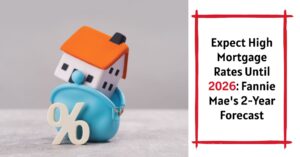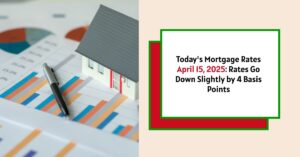Are you dreaming of owning a home or perhaps considering a refinance? Well, there's some good news to share! As of today, mortgage rates have gone down below the 7% mark. According to recent data from Zillow, the 30-year fixed purchase rate has fallen to 6.86%, offering a potential sigh of relief for prospective homeowners and those looking to refinance. But what does this really mean for you, and is it time to jump in? Let's dive deeper.
Mortgage Rates Go Down Below 7%: Should You buy or Refinance
A drop in mortgage rates, even a seemingly small one, can have a significant impact on your financial life. Think about it: a lower interest rate translates to lower monthly payments, making homeownership more accessible and freeing up cash for other financial goals. It's not just about buying a home either. Lower rates can also make refinancing an attractive option, allowing you to potentially save thousands of dollars over the life of your loan.
The Numbers: A Closer Look at Current Mortgage Rates
Here’s a snapshot of today's (April 15, 2025) national average mortgage rates, as reported by Zillow:
- 30-year Fixed: 6.86%
- 20-year Fixed: 6.83%
- 15-year Fixed: 6.19%
- 5/1 ARM: 7.10%
- 7/1 ARM: 7.35%
- 30-year VA: 6.46%
- 15-year VA: 6.07%
- 5/1 VA: 6.43%
And here are today's (April 15, 2025) national average refinance rates, as reported by Zillow:
- 30-year Fixed: 6.86%
- 20-year Fixed: 6.60%
- 15-year Fixed: 6.17%
- 5/1 ARM: 6.80%
- 7/1 ARM: 7.29%
- 30-year VA: 6.51%
- 15-year VA: 6.17%
- 5/1 VA: 6.46%
Important Considerations:
- These are just national averages. Your actual rate will vary depending on your credit score, down payment, loan type, and the specific lender you choose.
- Refinance rates are typically higher than purchase rates.
How Lower Rates Impact Your Wallet: An Example
Let's say you're looking at a $400,000 mortgage. A rate drop from 7.2% to 6.86% might not seem huge, but it can make a difference.
| Rate | Monthly Payment (Principal & Interest) | Total Interest Paid (over 30 years) |
|---|---|---|
| 7.2% | $2,717 | $578,084 |
| 6.86% | $2,624 | $544,535 |
Over the life of the loan, you'd save over $33,000! That's real money that could be used for other investments, your kids' education, or a well-deserved vacation.
Fixed vs. Adjustable: Understanding Your Mortgage Options
Navigating the world of mortgages can be confusing, especially when it comes to different types of loans. Here's a breakdown of two popular choices:
- Fixed-Rate Mortgages: With a fixed-rate mortgage, your interest rate stays the same for the entire life of the loan. This provides predictability and peace of mind, knowing your monthly payments won't fluctuate. The 30-year fixed rate mortgage is the most popular choice for many homebuyers.
- Adjustable-Rate Mortgages (ARMs): An ARM typically offers a lower initial interest rate, but that rate can change over time based on market conditions. For example, a 5/1 ARM means the rate is fixed for the first five years, then adjusts annually.
A Word of Caution on ARMs:
While ARMs can be tempting due to their lower initial rates, they come with risk. If interest rates rise, your monthly payments could increase significantly. I would only consider an ARM if you plan to sell or refinance before the initial fixed-rate period ends.
Read More:
Tariffs Push Mortgage Rates Down But Housing Costs Remain Record High
Mortgage Rates Likely to Go Down in the Short Term Due to Tariffs
Refinancing: Is It the Right Move for You?
If you already own a home, lower mortgage rates might make refinancing a smart financial move. Refinancing involves taking out a new loan to replace your existing one, ideally at a lower interest rate.
Benefits of Refinancing:
- Lower monthly payments: This is the most common reason to refinance.
- Shorten your loan term: By refinancing to a shorter term, you can pay off your mortgage faster and save on interest.
- Switch from an ARM to a fixed-rate: This can provide stability and protection against rising interest rates.
When Does It Make Sense to Refinance?
As a general rule, if you can lower your interest rate by at least 0.5% to 1%, refinancing is worth considering. However, it's important to factor in closing costs, which can range from 2% to 6% of the loan amount.
Pro Tip: Use a mortgage calculator to compare your current mortgage with potential refinance options to see how much you could save.
The Fed and Future Rate Trends: What to Expect
Predicting the future of mortgage rates is never easy, but the Federal Reserve (the Fed) plays a significant role. The Fed controls the federal funds rate, which influences other interest rates, including mortgage rates.
Recently, the Fed has held steady on interest rate cuts, and experts don't anticipate drastic rate drops before the end of the year. The Fed's decisions are based on factors like inflation and economic growth, so keeping an eye on these indicators is crucial.
What's Next? My Personal Take
While the recent dip below 7% is encouraging, I don't expect a dramatic plunge in mortgage rates anytime soon. The Fed is likely to remain cautious, and economic conditions can change quickly.
Here's my advice:
- Don't try to time the market. Instead, focus on your personal financial situation.
- If you're ready to buy or refinance, shop around and compare rates from multiple lenders.
- Consider locking in a rate if you find a good deal.
The housing market is always evolving. Staying informed and making smart financial decisions based on your individual circumstances is the key to success.
Work With Norada, Your Trusted Source for
Real Estate Investment in the U.S.
Investing in turnkey real estate can help you secure consistent returns with fluctuating mortgage rates.
Expand your portfolio confidently, even in a shifting interest rate environment.
Speak with our expert investment counselors (No Obligation):
(800) 611-3060
Also Read:
- Will Mortgage Rates Go Down in 2025: Morgan Stanley's Forecast
- Expect High Mortgage Rates Until 2026: Fannie Mae's 2-Year Forecast
- Mortgage Rate Predictions 2025 from 4 Leading Housing Experts
- Mortgage Rates Forecast for the Next 3 Years: 2025 to 2027
- 30-Year Mortgage Rate Forecast for the Next 5 Years
- 15-Year Mortgage Rate Forecast for the Next 5 Years
- Why Are Mortgage Rates Going Up in 2025: Will Rates Drop?
- Why Are Mortgage Rates So High and Predictions for 2025
- Will Mortgage Rates Ever Be 3% Again in the Future?
- Mortgage Rates Predictions for Next 2 Years
- Mortgage Rate Predictions for Next 5 Years
- Mortgage Rate Predictions: Why 2% and 3% Rates are Out of Reach
- How Lower Mortgage Rates Can Save You Thousands?
- How to Get a Low Mortgage Interest Rate?
- Will Mortgage Rates Ever Be 4% Again?












